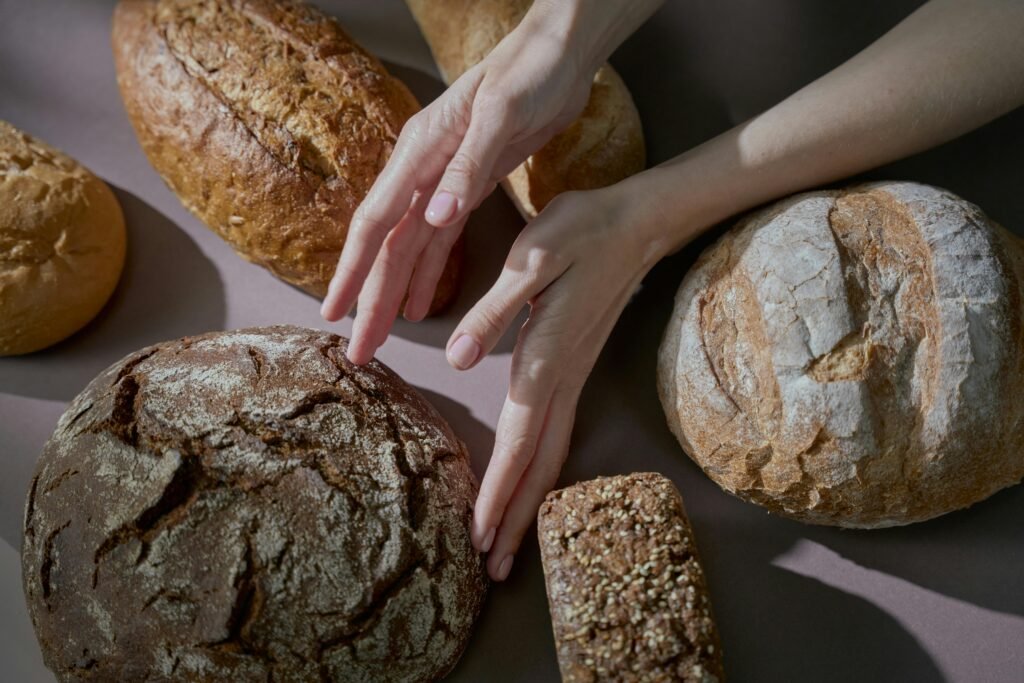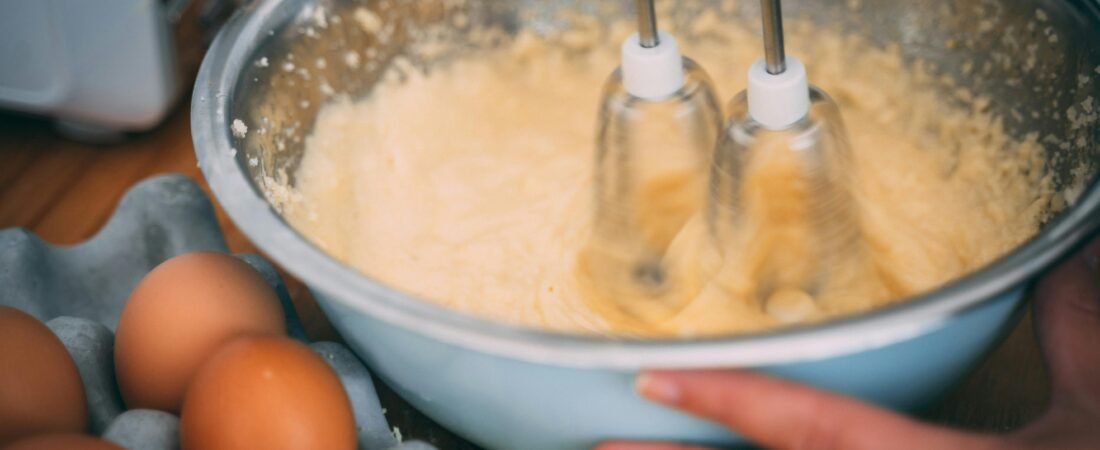If dinner hour at your house looks anything like mine—kids asking for snacks, the dog hoping something drops, and you trying to turn pantry staples into magic—you need kitchen tools that actually make life easier. Two small appliances do a lot of heavy lifting for family cooking and baking: the hand mixer and the electric mixing bowl (a.k.a. stand mixer).
This guide breaks down the real differences, who needs what, and how to choose without overspending. I’ll also recommend best-selling brands (low, medium, and high price ranges) for both categories, so you can pick confidently and get back to making muffins, mashed potatoes, and birthday cakes on a budget.

Quick Take: The Right Tool for the Job
- Choose a hand mixer if… you’re short on space, mostly make quick batters or whipped toppings, and want the most affordable, easy-to-store option.
- Choose a stand mixer if… you bake bread, cookies, or large batches often; want hands-free mixing; or hope to expand with attachments (like pasta, meat grinding, spiralizing).
Best of both worlds? Many families keep a hand mixer for daily tasks and use a stand mixer for holiday baking or weekly meal prep. That combo stretches your budget and time.
What Each Appliance Does Best
Hand Mixer (The Everyday Hero)
- Lightweight & compact: Slides into a drawer. Perfect for apartments, small kitchens, or minimalist counters.
- Fast setup, fast cleanup: Clip in beaters, plug in, go.
- Everyday jobs: Whipped cream, boxed cake mixes, brownies, pancake batter, frosting, meringue, quick mashed potatoes.
- Budget-friendly: Great performance without a big investment.
Where it struggles: Dense bread doughs and really big batches. You’ll hold it the whole time, so longer jobs can be tiring.
Stand Mixer / Electric Mixing Bowl (The Hands-Free Workhorse)
- Set it and let it: Add ingredients and let the mixer run while you prep the next step (or switch a load of laundry).
- Tackles heavy doughs: Cookies, pizza, sandwich loaves, and holiday breads are its sweet spot.
- Consistent results: Planetary mixing (the beater moves one way while the bowl moves the other) helps reduce scraping. Many models have multiple attachments for whip/beat/knead.
- Expandable: Certain brands accept attachments (pasta rollers, slicers, meat grinders) so one base can do a lot.
Where it’s less ideal: It’s heavier, pricier, and takes counter or cabinet space. Cleaning the bowl + accessories is still easy, but you’ll have more parts to wash.
Cost, Space, and Time: A Mom-Approved Comparison
| Factor | Hand Mixer | Electric Mixing Bowl (Stand Mixer) |
| Typical Price | Low ($20–$80) | Mid–High ($80–$500+) |
| Storage | Fits in a drawer | Countertop or cabinet space |
| Batch Size | Small–Medium | Medium–Large |
| Dough Strength | Light–Moderate | Moderate–Heavy |
| Time-Saving | Good (quick jobs) | Excellent (hands-free) |
| Cleanup | Minimal | Bowl + attachments |
| Longevity | Good with care | Excellent with reputable brands |

Real-Life Scenarios (So You Can Choose Faster)
- Weeknight chaos: Use a hand mixer to whip mashed potatoes, beat eggs, blend quick batters, or mix frosting while the pasta boils.
- Weekend bake-a-thon: Use a stand mixer for double-batch cookies, sandwich bread dough, cinnamon rolls, and large family desserts.
- Meal prep with kids: A stand mixer lets you measure and supervise while it mixes—great for little helpers.
- Apartment or dorm: Hand mixer all the way—tiny footprint, tiny budget, still gets the job done.
How to Choose: A Step-by-Step Plan
- List your “most-made” recipes. If it’s more brownies and whipped cream than bread, start with a hand mixer.
- Check your space. Measure a cabinet shelf or a spot on the counter before you buy a stand mixer.
- Set a realistic budget. You don’t need top-tier to bake well. Decide on low, medium, or high spend first.
- Pick features that matter. For hand mixers: comfortable grip, slow-start, snap-on storage. For stand mixers: bowl size (4–7 qt), tilt-head vs. bowl-lift, steady base, reliable motor.
- Think long-term. If you dream of homemade bread or pasta, a stand mixer with attachment options may save money versus buying separate machines later.
Best-Selling, Highly Loved Picks by Budget
Note: I grouped these by value and reputation with families and home bakers, and verified current models and standout features. Always check today’s pricing and reviews before purchasing.
Stand Mixers (Electric Mixing Bowls)
Low-Cost Pick: Hamilton Beach 4-Qt Stand Mixer (Planetary Action)
Why it’s recommended: You get true planetary mixing and a steady 300W motor without the premium price tag—great for cookies, cakes, and pizza dough in family-size batches. It covers the bowl well, includes essential attachments, and is a smart first stand mixer if you’re budget-minded or short on space.
Mid-Range Pick: Aucma 6.5-Qt Stand Mixer
Why it’s recommended: Families love its big 6.5-quart bowl, 660W motor, and included dough hook/whisk/beater. It’s a strong value for weekly baking, birthday cakes, and holiday prep—plenty of power and capacity without jumping to “investment” pricing. Noise levels are reasonable and the tilt-head design is user-friendly.
High-End Pick: KitchenAid Artisan 5-Qt Tilt-Head Stand Mixer
Why it’s recommended: A classic for a reason—durable metal build, reliable performance, and a deep attachment ecosystem that turns one base into a pasta maker, spiralizer, and more. It consistently wins expert tests and buyer praise for versatility and longevity; if you bake often, it’s a long-term investment piece.
Hand Mixers
Low-Cost Pick: Hamilton Beach 6-Speed Hand Mixer
Why it’s recommended: Reliable, no-frills power for daily mixing at an ultra-friendly price. It typically includes beaters (and often a whisk), offers multiple speeds, and is perfect for brownies, quick breads, whipped cream, and frosting. It frequently appears among Amazon’s best-sellers for hand mixers.
Mid-Range Pick: Cuisinart Power Advantage PLUS 9-Speed
Why it’s recommended: A favorite “step-up” model thanks to its 9 speeds, 220W motor, and smooth start feature that reduces splatters. The storage case keeps parts together (hallelujah, no lost beaters!), and the LED speed display feels modern without being fussy.
High-End Pick: Breville Handy Mix Scraper (9-Speed)
Why it’s recommended: It’s the luxury hand mixer—quiet “scraper” beaters contact the bowl more fully, and its smart “Beater IQ” tech adjusts speed based on the attachment. It’s pricey for a hand mixer, but testers and serious home bakers love the performance and thoughtful design.
Tilt-Head vs. Bowl-Lift (Stand Mixers)
- Tilt-Head: The head lifts up to access the bowl and attachments. Often a bit lighter, popular for home kitchens (e.g., KitchenAid Artisan). Great for cookies, cakes, and most bread recipes.
- Bowl-Lift: The bowl raises and lowers with a lever. Usually higher-capacity and geared toward heavy doughs and frequent baking. Good if you batch-cook or bake multiple loaves weekly.
Maintenance & Care (So Your Investment Lasts)
- For both: Wash attachments promptly—dried dough is harder to remove. Keep cords coiled and stored safely.
- Hand mixers: Don’t run on a too-high speed at the start; use slow-start if available to reduce splatter and motor strain (Cuisinart’s SmoothStart is a great example).
- Stand mixers: Lock the head (tilt-head models) before starting, and start at low speed to keep flour clouds in the bowl. Periodically check that the beater-to-bowl clearance is correct (most manuals explain a simple coin test).

Safety Tips for Cooking with Kids
- Keep hair tied back and little hands away from moving beaters.
- Always unplug before changing attachments or scraping down a bowl.
- Use the lowest speed to start, then increase as ingredients combine.
- For stand mixers, use the pouring shield/splash guard if included when adding flour or sugar.
Thrifty Tips to Stretch Your Budget
- Start with a hand mixer. If you’re new to baking, this $-friendly tool covers 80% of everyday tasks. Upgrade later if bread-baking becomes a weekly habit.
- Watch seasonal sales. Big savings often pop up around Prime-style sales, Black Friday, and Mother’s Day. KitchenAid’s Artisan frequently goes on sale.
- Choose the right size. A 5-quart bowl is a family sweet spot—big enough for most recipes without hogging the counter.
- Consider color & longevity. If the mixer will live on your counter, pick a color you love—the right appliance earns its space and gets used more. (KitchenAid even releases special bowls and finishes that can blend with your decor.)
- One base, many jobs. If you plan to add pasta, shredding, or grinding later, choosing a stand mixer with an attachment hub can save you from buying separate gadgets.
Use-Case Cheat Sheet
- Cookies every weekend + school bake sales: Stand mixer.
- Brownies, pancakes, frosting, whipped cream: Hand mixer.
- Bread and pizza dough (1–2 loaves a week): Stand mixer.
- Holiday marathons (pie + rolls + frosting): Stand mixer.
- Tiny kitchen or college apartment: Hand mixer.

FAQs
Q: Can a hand mixer knead bread?
A: Light dough, maybe. But it’s tiring to hold and risks overheating. A stand mixer with a dough hook is more comfortable and consistent for kneading.
Q: What size bowl do I need?
A: For most families, 5 quarts hits the sweet spot. If you batch-bake or do big holiday projects, 6–7 quarts gives more breathing room.
Q: Is a stand mixer worth it if I don’t bake weekly?
A: If you bake occasionally and have limited space, a hand mixer is likely enough. If you love baking or want hands-free mixing, the stand mixer becomes a time-saving workhorse.
Final Thoughts: Pick for Today, Plan for Tomorrow
If your goal is quick, budget-friendly family meals, a hand mixer is the MVP—affordable, compact, and perfect for 80% of everyday jobs. If you love baking or want hands-free power for heavier doughs and bigger batches, a stand mixer becomes the helper you’ll rely on during busy seasons and holidays.
And you don’t have to choose forever. Many Thrifty Nest readers start with a hand mixer, then add a stand mixer when baking becomes a bigger part of family life. Whatever you pick, aim for a tool that saves you time, fits your space, and keeps your kitchen calm—even at 5:30 p.m. on a school night.
This post may contain affiliate links, which means we might earn a small commission (at no extra cost to you) if you decide to make a purchase through one of these links. Thanks for your support!












